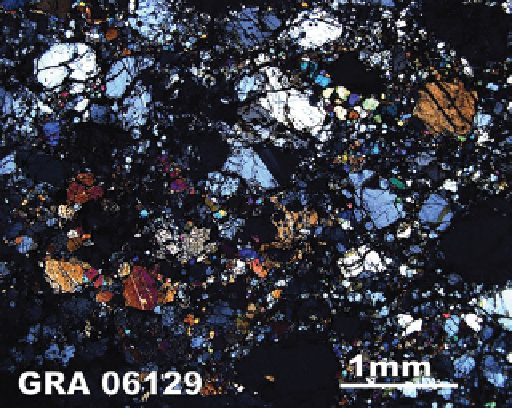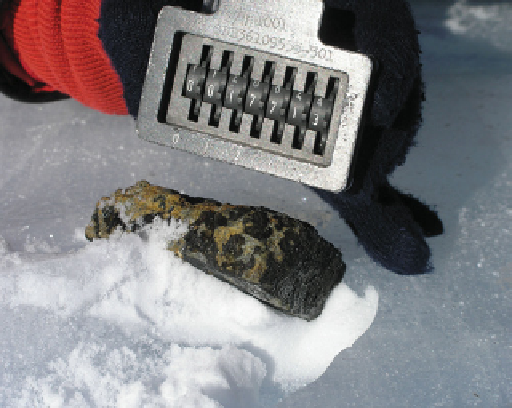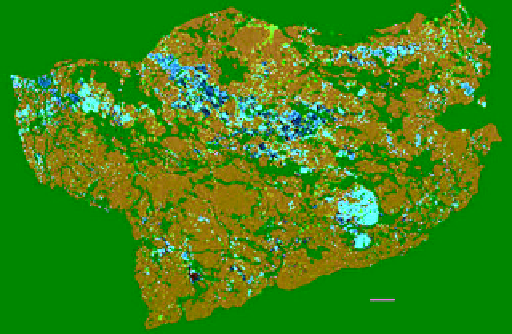Geology Reference
In-Depth Information
Ungrouped achondrite
447.6, 196.45 g
Found January 12 and 8, 2006
8.5 × 4.0 × 7.5; 8.0 × 5.0 × 2.5 cm
Weathering = Ce
Antarctica has been a steady source of new meteorites that do not initially
fall into a standard classification but rather define new groups. one such
sample is the ungrouped achondrite pair graves Nunataks 06128 and
06129. These samples have been studied intensely by many scientists and
their grouping is still unknown, but they are apparently related to another
small group of achondrites, the brachinites, and represent differentiated
material.
Olivine
GRA06129
0.018
Mars
Moon
0.015
Earth
0.012
A-L
B
0.009
0.006
Earth
Moon
0.003
1mm
Mars
0.000
0.00
0.30
0.60
0.90
Fe (afu)
1.20
1.50
1.80
Plate 49
MiNERALogy
SigNiFiCANCE
The unusal mineralogy is typified by 60%-70% sodic
feldspar (Ab, An, or), with smaller amount of olivine,
pyroxenes, phosphates, sulfide, and chromite. The mafic
phases are found associated together, and overall there is
a lineation texture to the meteorites (above left with pla-
gioclase = purple, pyroxene = green, olivine = orange-yel-
low, phosphates = blue-green, and iron oxides, sulfides,
and metals = red; [364]), along with the platy fracture
seen in both stones.
The relation to the brachinites has been made by o iso-
topes and mineralogy (above right, [365]), and suggests
that the brachinites may come from a melted chondritic
parent body. The differentiation age is old and may pro-
vide additional constraints on the thermal conditions in
small parent bodies in the early solar system. Connections
to other ungrouped achondrites that are related to bra-
chinites remain an unclear but exciting possibility that
could lead to a larger group of samples representing this
parent body.
References [358-367].




